Translation
Categories: gcse geometry

A translation is a type of transformation that moves shape from one location to another.
Example of translation
In this diagram, the blue triangle A is mapped onto the red triangle B by a translation:

Translating a shape moves it to a new position without changing its appearance in any way:
- It remains the same size.
- It isn't rotated.
- It isn't mirrored ("flipped over").
All that has happened is the shape has changed its position. It can be moved in the x direction, the y direction, or both.
Translation in the x direction
Translation in the x direction moves the shape horizontally, either left or right.
Here, blue triangle A is translated to the right to map onto the red triangle B:
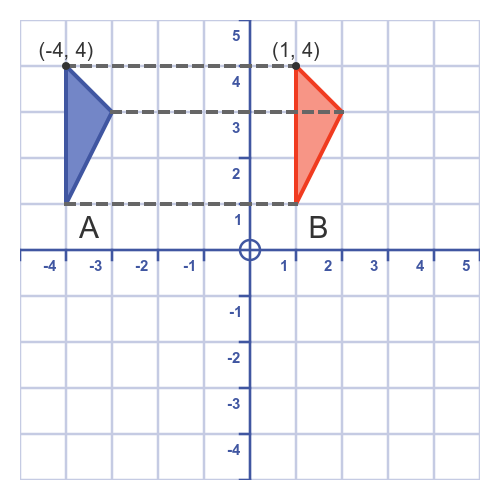
The top corner of the blue triangle is at position (-4, 4), and the top corner of the red triangle is at position (1, 4).
The translation in the x direction is found by subtracting the initial x-coordinate (-4) from the final x-coordinate (1). This is:
1 - (-4) = 1 + 4 = 5
This means that if we move A to the right by 5 units, it will be in the exact position of B.
The y-coordinates are both equal to 4, so we don't need to move the triangle in the y direction at all.
Translation vectors
We usually describe a translation by a column vector. This shows the distance the shape moves in the x and y directions like this:
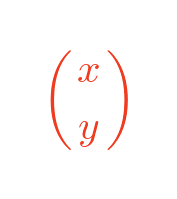
In the example above, the shape moves 5 units to the right (the positive x direction), and does not move at all in the y direction, so the vector describing this transformation is:
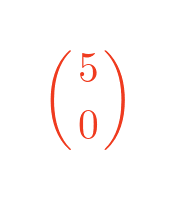
Translation in the negative x direction
In this next example we will move the shape to the left:
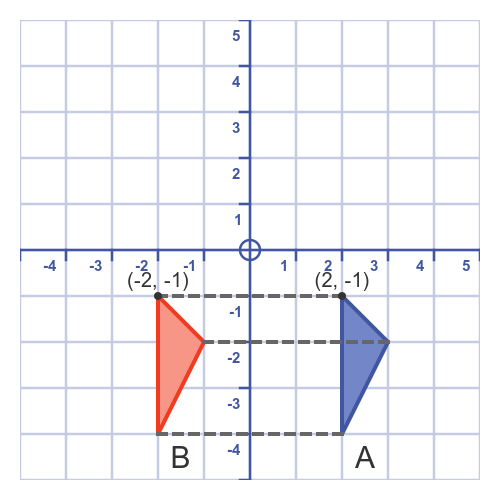
This time the top corner of the blue triangle is at position (2, -1), and the top corner of the red triangle is at position (-2, -1). This means that the x-coordinate has changed by:
(-2) - 2 = -4
This is the translation vector:
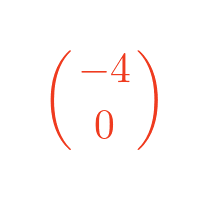
Rule: A positive x translation moves the shape to the right, and a negative x translation moves the shape to the left.
Translation in the y direction
Translation in the y direction moves the shape vertically, either up or down.
Here, blue triangle A is upwards to map it onto the red triangle B:
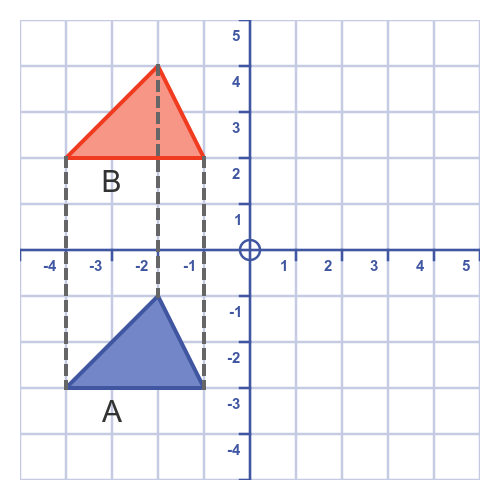
The top corner of the blue triangle is at position (-2, -1), and the top corner of the red triangle is at position (-2, 4).
The difference between the two y-coordinates is:
2 - (-3) = 2 + 3 = 5
This means that if we move A up by 5 units, it will be in the exact position of B.
This time x-coordinates are both equal to 4, so we don't need to move the triangle in the x direction.
The translation vector in this case is:
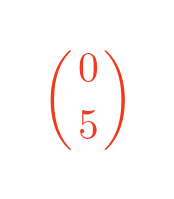
Translation in the negative y direction
In this next example we will move the shape down:
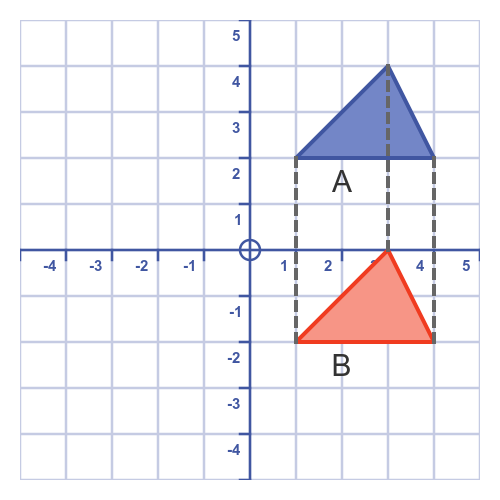
The top corner of the blue triangle is at position (3, 4), and the top corner of the red triangle is at position (3, 0). This means that the y-coordinate has changed by:
0 - 4 = -4
This is the translation vector:
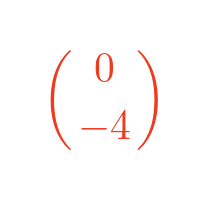
Rule: A positive y translation moves the shape upwards, and a negative y translation moves the shape downwards.
Translation in the x and y directions
This example shows a rectangle translated in the x and y directions:
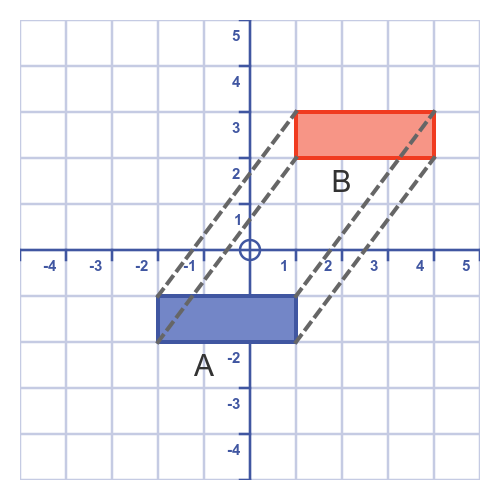
The shape is moved 3 units to the right and 4 units up, so the translation vector is:
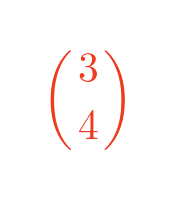
Here is a second example:
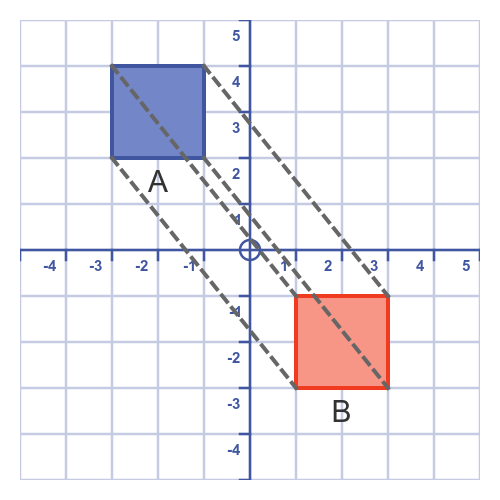
The shape is moved 4 units to the left and 5 units up, so the translation vector is:
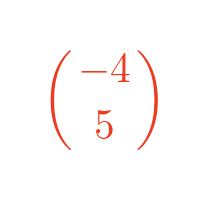
Translation exercises
Exercise 1
Describe the single transformation that maps shape A onto shape B:
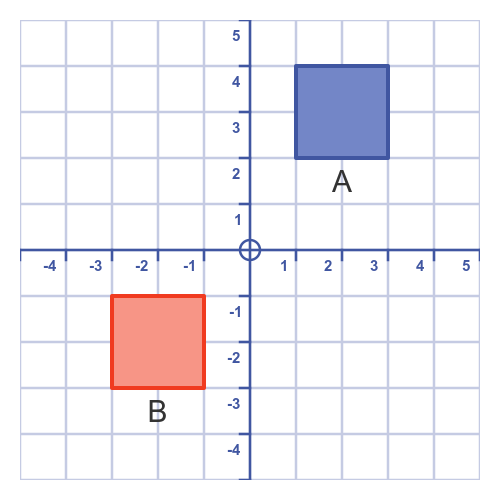
Exercise 2
Show the result of translating this shape:
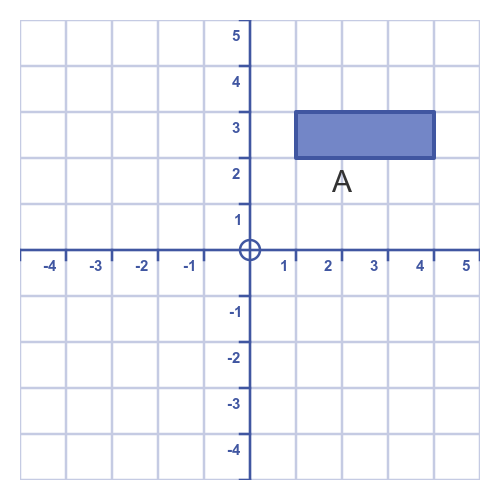
using the vector:
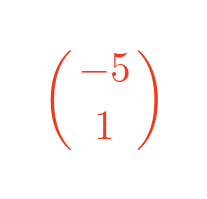
Common mistakes
A common mistake is to use the gap between the shapes rather than the distance the shape has been translated:
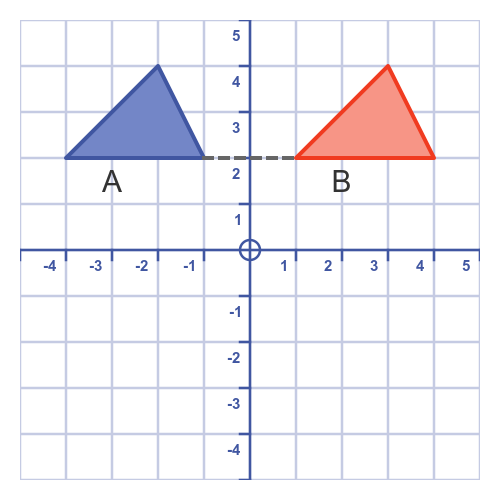
In this diagram, we have marked the distance from the rightmost point of A to the leftmost point of B. This distance is 2.
But that distance isn't the translation distance, because we are not using the equivalent points on each shape. 2 is the gap between the shapes.
If we compare the top points of the two triangles, we can see that the translation distance is 5.
A second common mistake is to get the signs of the translation vector incorrect. Always remember the translation is the final position minus the start position, and double check that the signs are consistent with the rules:
- Positive x translates to the right, negative x translates to the left.
- Positive y translates upwards, negative y translates downwards.

Join the GraphicMaths Newletter
Sign up using this form to receive an email when new content is added:
Popular tags
adder adjacency matrix alu and gate angle area argand diagram binary maths cartesian equation chain rule chord circle cofactor combinations complex modulus complex polygon complex power complex root cosh cosine cosine rule cpu cube decagon demorgans law derivative determinant diagonal directrix dodecagon eigenvalue eigenvector ellipse equilateral triangle euler eulers formula exponent exponential exterior angle first principles flip-flop focus gabriels horn gradient graph hendecagon heptagon hexagon horizontal hyperbola hyperbolic function hyperbolic functions infinity integration by parts integration by substitution interior angle inverse hyperbolic function inverse matrix irrational irregular polygon isosceles trapezium isosceles triangle kite koch curve l system line integral locus maclaurin series major axis matrix matrix algebra mean minor axis nand gate newton raphson method nonagon nor gate normal normal distribution not gate octagon or gate parabola parallelogram parametric equation pentagon perimeter permutations polar coordinates polynomial power probability probability distribution product rule proof pythagoras proof quadrilateral radians radius rectangle regular polygon rhombus root sech set set-reset flip-flop sine sine rule sinh sloping lines solving equations solving triangles square standard curves standard deviation star polygon statistics straight line graphs surface of revolution symmetry tangent tanh transformation transformations trapezium triangle turtle graphics variance vertical volume of revolution xnor gate xor gate